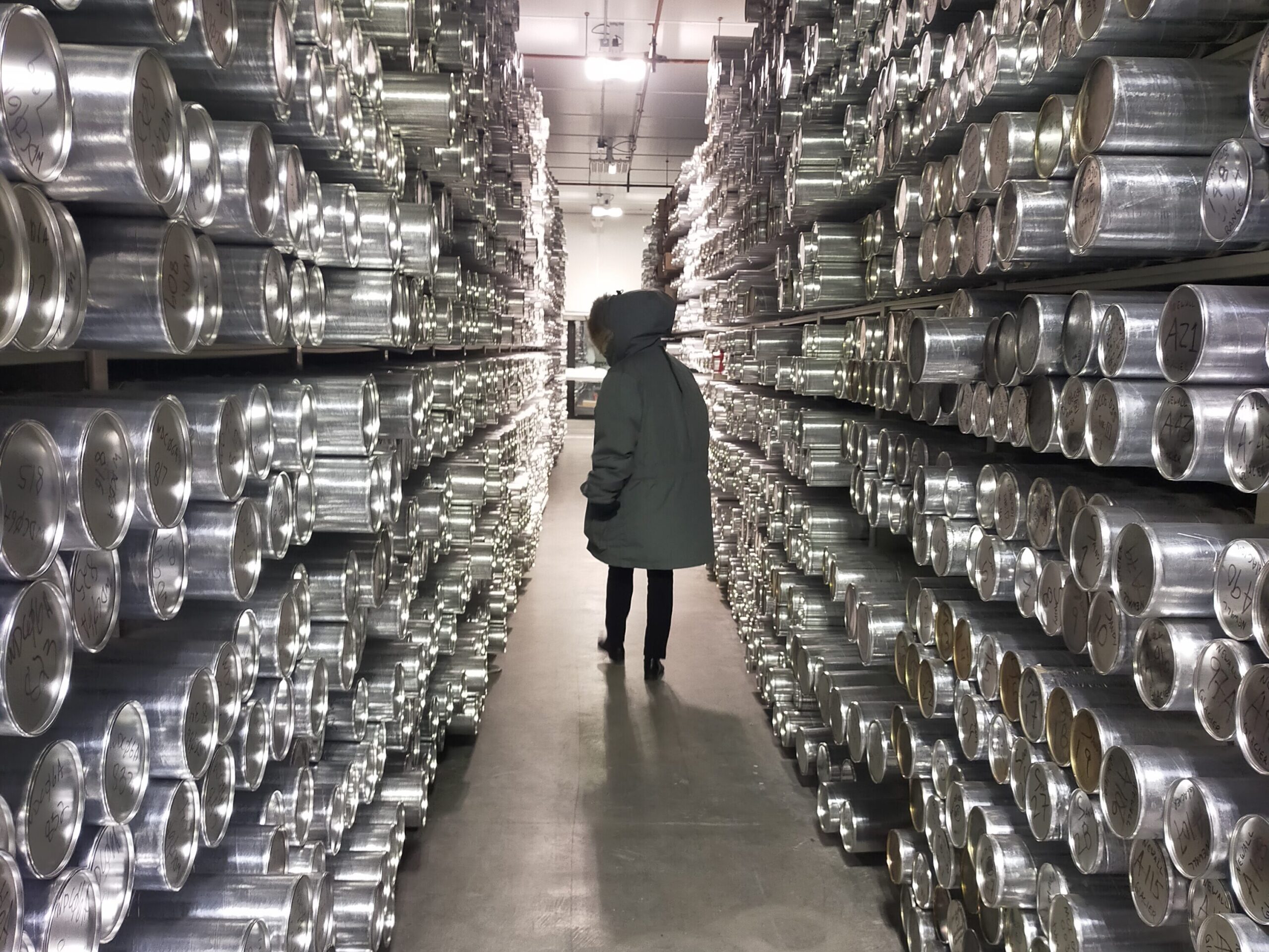
Photo by Konrad Flæte Gundersen
By: Konrad Flæte Gundersen
______________________________________________________________________________
NATIONAL SCIENCE FOUNDATION ICE CORE FACILITY – The U.S. government’s storehouse for polar ice cores used to decipher the Earth’s climate history is filled to the brim, forcing federal curator Curtis La Bombard to determine what can be culled.
New ice cores extracted from Antarctica and Greenland for current scientific research still arrive regularly in this -40°F freezer facility where La Bombard works at the U.S. Geological Survey’s regional headquarters west of Denver.
For months, he’s been preoccupied with keeping it functional after 30 years of scientific service, he said. A long-planned new freezer with increased storage capacity isn’t expected to be completed for at least three years.
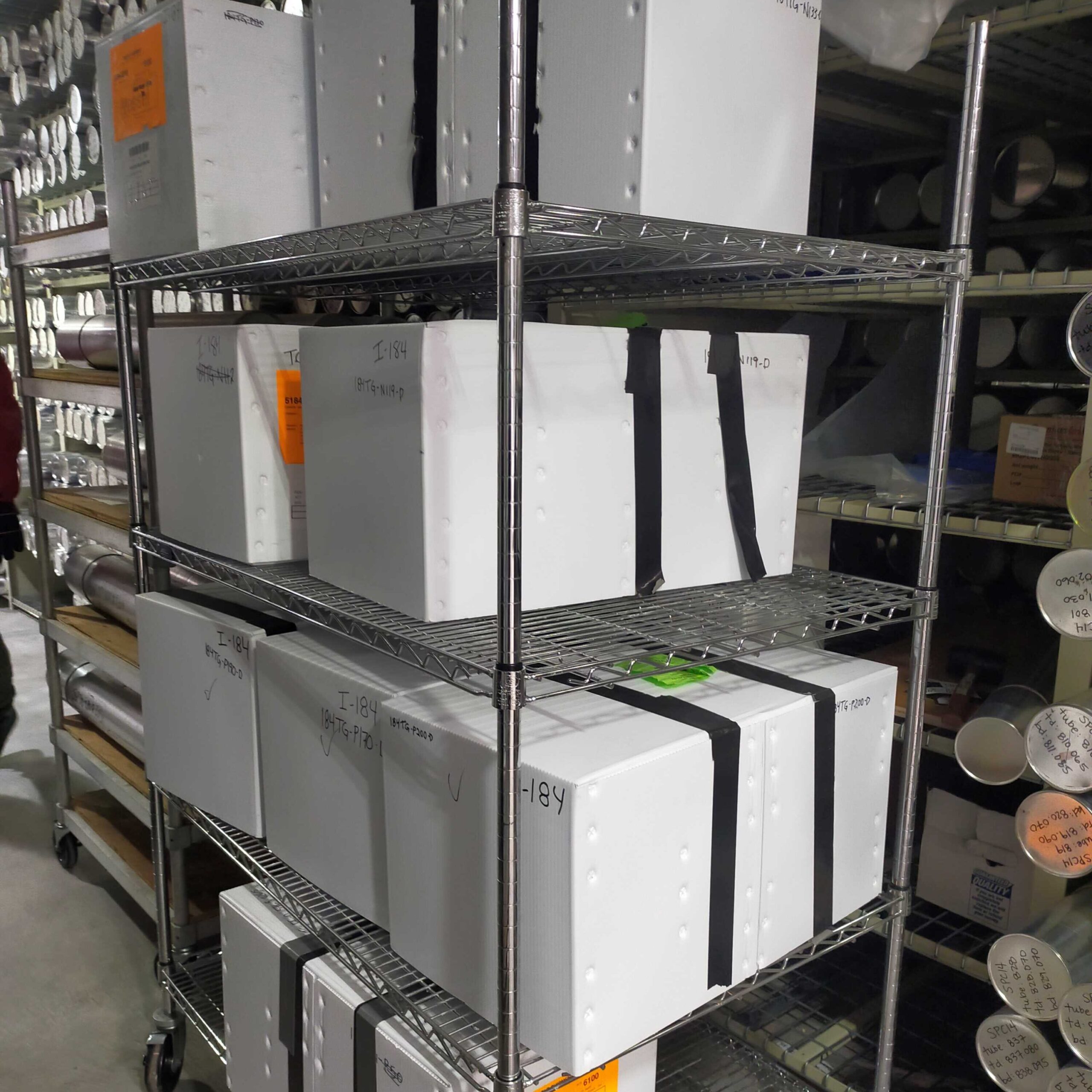
Photo by Konrad Flæte Gundersen
The freezer here is so overloaded that, during a recent afternoon visit, USGS research scientists in puffy hooded coats navigating the aisles had to step around heavily loaded pallets holding newly-arrived ice not yet cut and encased in silvery protective tubes.
Ice cores that have degraded over decades in the freezer, or are no longer needed for research, will be identified for removal, La Bombard said, standing outside the freezer.
Surplus ice is made available to the public through an application process that lets federal agency officials consider how it would be put to use, he said.
Federal ice custodians don’t want to just throw out the cores into the USGS parking lot, where they’d quickly melt, La Bombard said. University climate researchers and artists are among those who have submitted applications.
Artist Melanie Moser, who works in Colorado and New York City, discovered the opportunity and has used ice cores in six projects. She said in an interview that she she’s planning to obtain more.
Government-backed science teams collect the ice cores, at a cost of up to $25,000 per meter, by drilling thousands of feet under the polar regions. Airplanes, ships and specialized trucks haul the ice to the facility in metro Denver.
The ice contains air bubbles that hold evidence of the Earth’s atmosphere from the present back to 800,000 years ago. By analyzing the air inside those bubbles, scientists were able to determine how much heat-trapping gas, such as carbon dioxide, was present in the atmosphere that governs the global climate.
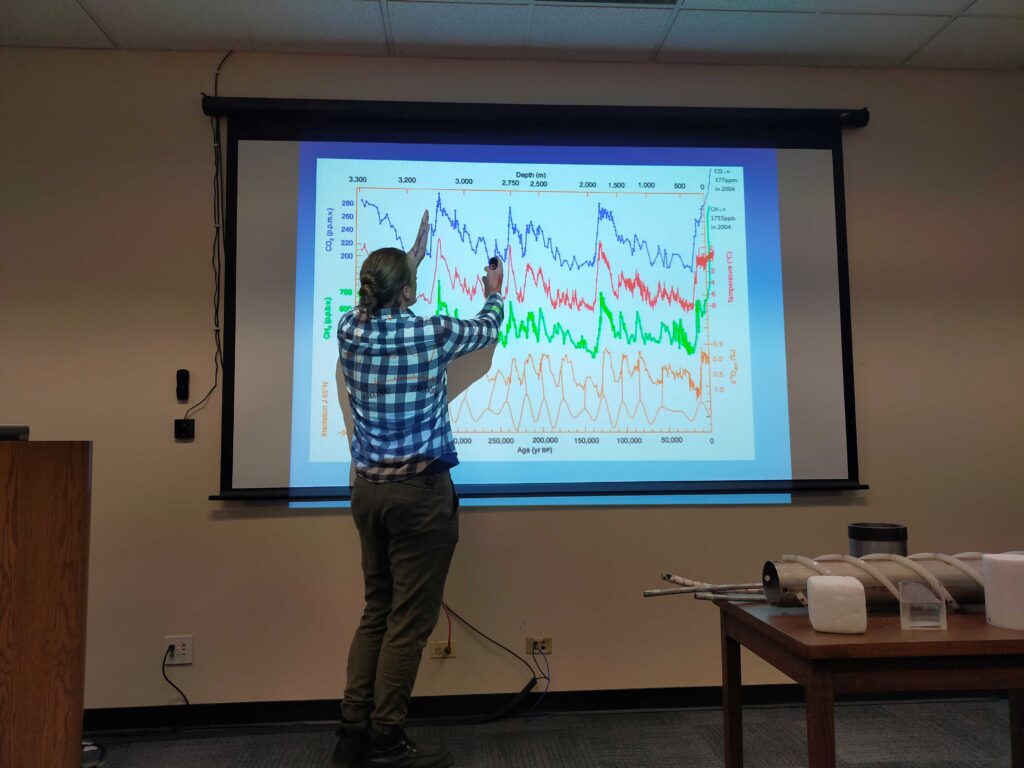
Photo by Konrad Flæte Gundersen
This is how humans discovered that human activities since industrialization around 1870 have led to unprecedented concentrations of heat-trapping gases that cause global warming, according to Theo Carr, a science technician at the facility who presents overviews of climate science findings.
Scientists used the analysis of the trapped air to reconstruct atmospheric patterns from millions of years before humans were present. This became the basis for their consensus that the rising temperatures this century are the result of more than natural fluctuations.
Last year, the global average concentration of carbon dioxide, the main heat-trapping gas, reached a record high around 418 parts per million, Colorado-based federal scientists for the National Oceanic and Atmospheric Administration have determined.
Global average temperatures gradually are increasing, causing climate change around the planet, Carr said. Even if humans ceased all emissions from burning fossil fuels immediately, global warming would continue on an upward trajectory for a couple more decades due to the persistence of CO₂, he said.
“We’re waiting for the hammer to drop on the temperature,’’ Carr said.
Meantime, Moser is considering how her art projects could explore “legitimate earthly and spiritual wisdom” contained in the ice.
“I was blown away,’’ Moser said in an interview, describing her first encounter with an ice core. She purchased a camping cooler and packed in the ice – from Greenland – and hauled it into mountains west of Boulder where recent ice and snow still is present in the remains of a glacier.
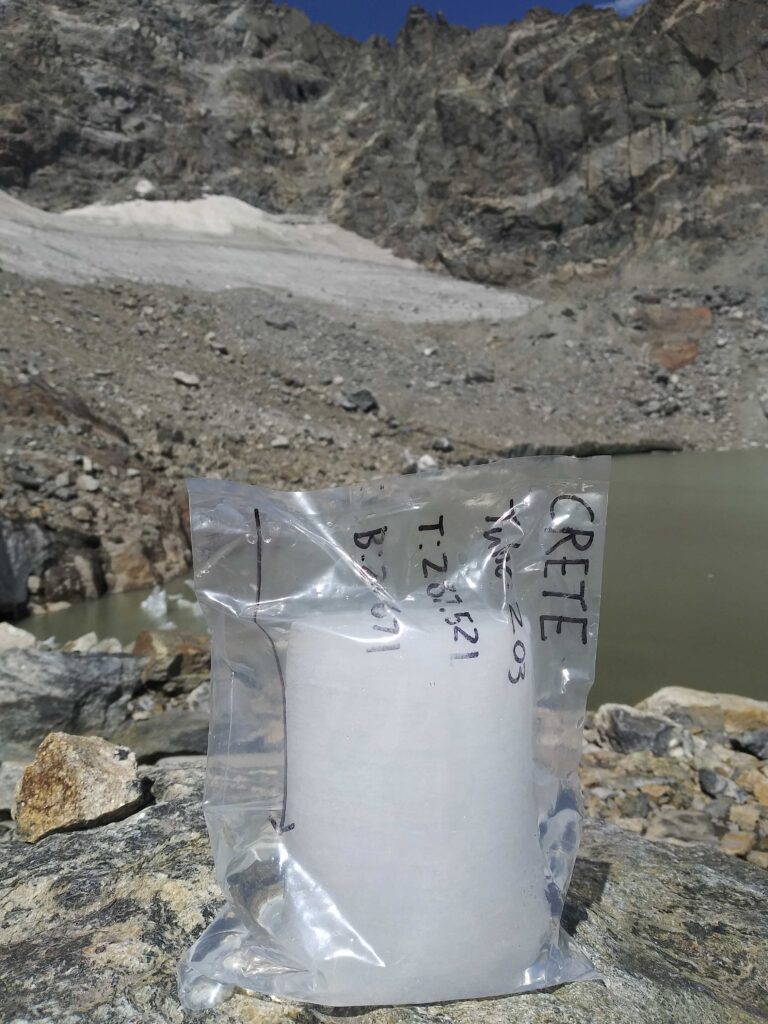
Photo courtesy of Melanie Moser
She introduced the centuries-old ice from Greenland to the Colorado ice. “I thought they should know each other,” Moser said.
Then she transported an ice core from Antarctica to New York. She carried it around in the city as it melted, she said, and she poured blue dye over the ice and made a video.
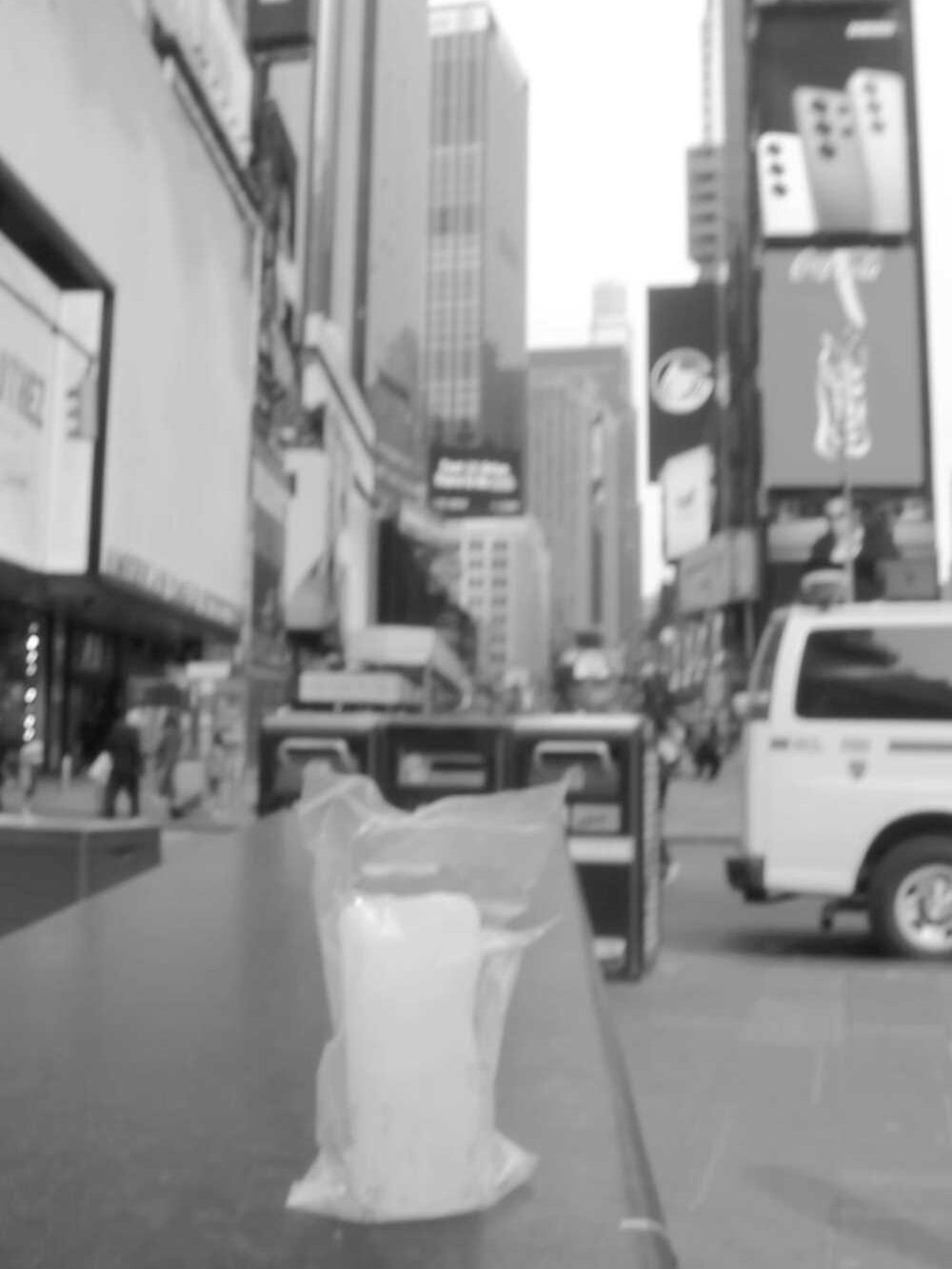
Photo courtesy of Melanie Moser
She’ll obtain more ice for projects in the future, she said. “Maybe there’s a language in there other than what scientists can decipher,” she said. “I believe the ice contains a lot of wisdom.”


